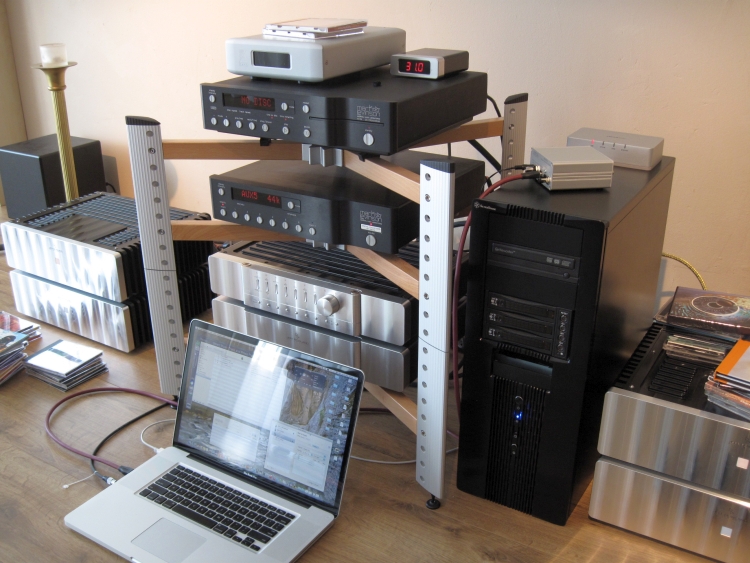
Mac compared to PC, two iTunes sound enhancements and a range of DA-converters and USB interfaces
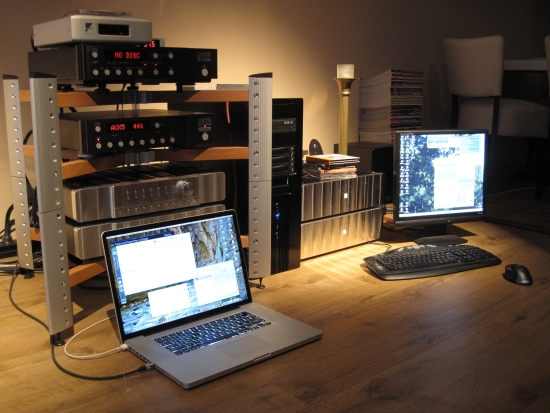
The above picture looks very cozy but this really was one majorly exhausing test. Not only did I compare Mac to PC but also many different playback applications on either platform as well as a two sound enhancement add-ons for iTunes named Amarra and Pure Music. This report is neccesarily a little lengthy and possibly even confusing but I’ll try and make this matter as clear and understandable as possible.
So, I used both a Macbook Pro and a full size PC running Windows XP. In order to get audio out of these computers, I used all methods that I had at hand, both internal PCI card and external interfaces. I used toslink, s/pdif coaxial and USB for data transfer.
The audio was taken out of the computers in three different manners:
PC:
-S/Pdif out from the EMU1212M PCI soundcard to the ML no360S dac
-USB into the M2Tech HiFace EVO interface, then s/pdif to the ML DAC.
-USB straight to the Ayre QB-9 USB DAC (bypassing the Levinson)
-USB straight to the Arcam rDAC (bypassing the Levinson)
Macbook Pro:
-S/Pdif in toslink form straight into the Mark Levinson no360S dac
-USB into the M2Tech HiFace EVO interface, then s/pdif to the ML DAC.
-USB straight to the Ayre QB-9 USB DAC (bypassing the Levinson)
-USB straight to the Arcam rDAC (bypassing the Levinson)
If you want to read more about fileformats and want to know why applications matter, please see Computer audio part 2.
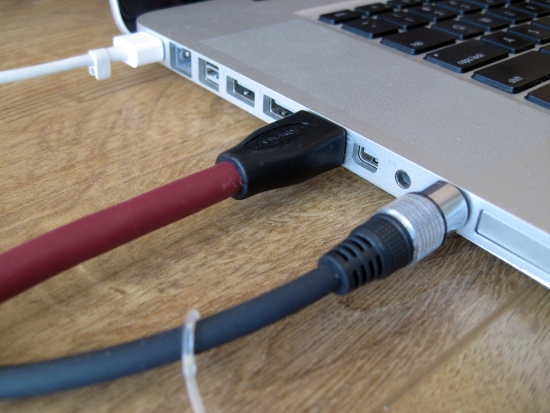
Above The Macbook was connected in two ways. First using a premium quality toslink optical cable. Second using a Transparent USB cable into the EVO, rDAC and Ayre QB-9.
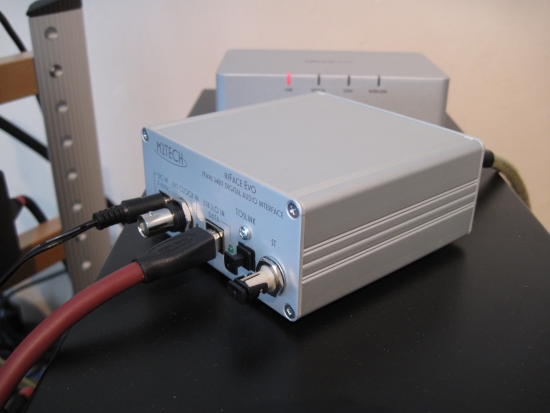
Above: M2Tech HiFace EVO USB interface. This little gem takes in USB in and spits out audio using all interfaces known to man. There are more connections on the other side. I used coaxial s/pdif using a Wireworld Gold Starlight III+ digital coaxial cable that was connected to a ML 360S DAC.
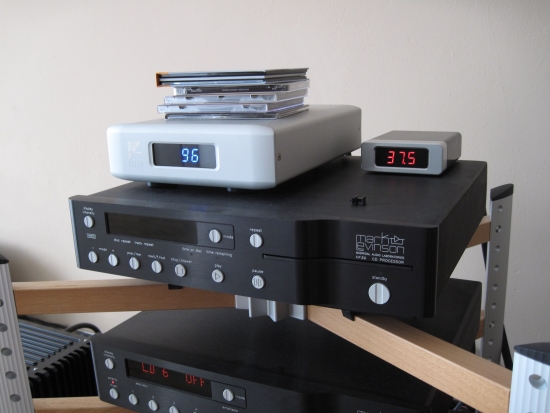
Above: Ayre QB-9 USB DAC on top of a Levinson 390S CD player. Unlike the EVO, the Ayre is not only an interface but a highend DAC too. And trust me, highend it is! At various aspects it even trumps my trusty Mark Levinson no.360S DAC!
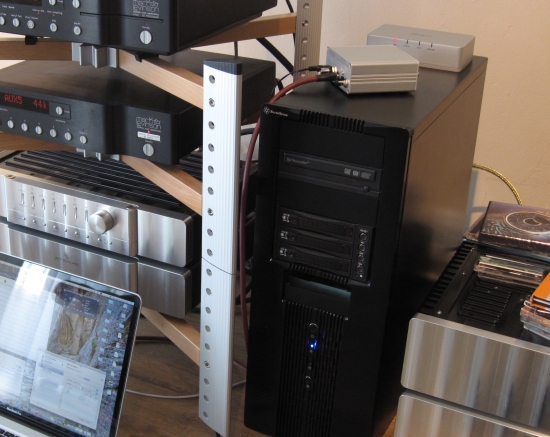
Above: The PC housing the EMU1212M PCI soundcard from which I use the s/pdif output. The PC is pretty much up to date and has very decent specs (Intel 2 core 6600, 2,4GHZ, 4GB Ram, XP SP3). On top of the PC is the HiFace EVo as well as the Arcam rDAC.
Technical matters
Music consisted of 4 carefully selected WAV files, ripped from CD with iTunes, then copied via the network to the PC. Also used in a later stage were various 24/96 LP recordings that I had made myself. I took Lossless audio out of the equation because of my preference for WAV/AIFF. Playback was always in native samplerate, no upsampling used, and always using Wave Out (not Directsound) with the most direct route in the playback app’s settings. This means using kernel streaming if available. FLAC conversion and playback was also tested but is discussed in another section below. In all cases the same digital coaxial cable (Wireworld Gold Starlight III+) was used and was swapped bewteen EVO, Ayre and EMU. The same goes for the USB cable (Transparent). The same interlink was used into the same preamp inputs. Even though I have two sets of the same interlink, they are different lengths and do sound different, therefore I continually swapped the same interlink. To make the comparisons even more honest, I used a crappy powercord for the PC, in order to bring it closer to the simple wall wart powersupply that the Macbook uses. All components were well-warmed up and always switched on and active at the same time during the test.
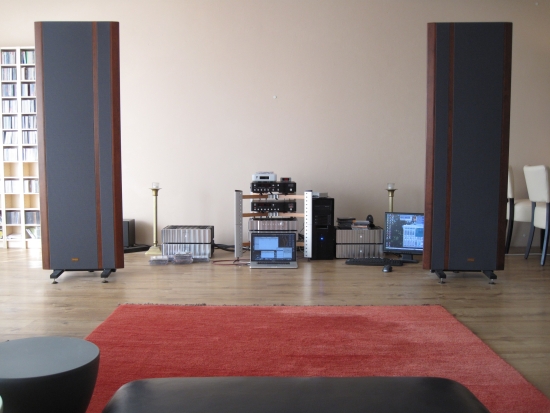
Above: The complete review system: Magnepan MG3.6R magnetostatic speakers, Jeff Rowland Model 6 and BPS 6 poweramps and battery power supplies, JeffRowland Coherence II battery powered preamp, Mark Levinson no.390S CD player, Mark Levinson no.360S DAC. I use Transparent XL series cabling throughout, both Ultra XL and Reference XL. The PC is not normally placed next to the system but at the other end of the room, connected via a very long RG59 coaxial digital cable. In this case I wanted to create equal circumstances and thus placed everything next to the system so that I could use the same Transparent USB cable and Wireworld Gold Starlight III+ coaxial digital cable.
PC Playback Applications tested
iTunes
current version 10
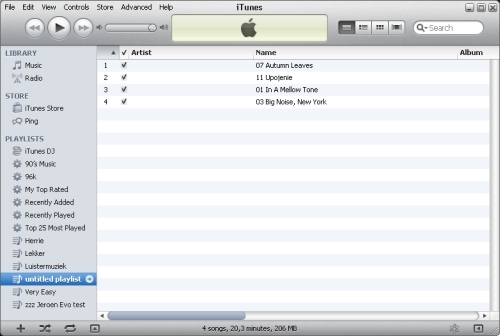
iTunes au naturel
Either USB-HiFace EVO or EMU1212M soundcard
Coaxial digital
Mark Levinson no.360S DAC
As can be read in Computer Audio Part 1, iTunes by itself sounds below par on Windows, no matter what interface you use.
iTunes with Virtual Cable
USB
HiFace EVO
Coaxial digital
Mark Levinson no.360S DAC
There is a solution called Virtual Cable. Unfortunately though, this didn’t work in combination with the EVO USB interface. No matter what settings I made, I kept having intermittent stuttering and other errors. It seems like the EVO demands more than the VC app can deliver. Even when it played without hickups, it didn’t sound very hot with the EVO. On top of this, I recently discovered that Virtual Cable isn’t stable in the long run anyway (it hickups once or twice a day, if you let it run continuously) so I am inclined yet again to advise against using iTunes on Windows.
iTunes with Virtual Cable
EMU1212M PCI soundcard
Coaxial digital
Mark Levinson no.360S DAC
This combination actually sounds very good but regrettably I recently discovered that Virtual Cable isn’t stable in the long run anyway (it hickups once or twice a day, if you let it run continuously) so I am inclined yet again to advise against using iTunes on Windows, even if you get VC to work fairly stable.
iTunes with Virtual Cable
USB
Ayre QB-9
The Ayre QB-9 is an USB-DAC and as such is both interface and DA converter in one so the Levinson is not needed here. This combination sounds extremely good but regrettably I recently discovered that Virtual Cable isn’t stable in the long run anyway (it hickups once or twice a day, if you let it run continuously) so I am inclined yet again to advise against using iTunes on Windows, even if you get VC to work fairly stable.
Tips:
Try Virtual Cable; if it works in combination with your preferred playback device, and you can forgive the occasional hickup, iTunes provides very good quality audio. If VC fails to work properly for you, you should avoid using iTunes on a PC. Also see Optimizing iTunes for Windows
Conclusion:
Don’t try this at home. There are many more apps around that do work stably and also sound fine. iTunes’ dependence upon Quicktime and only using default Windows sound device, offers too little for dedicated audiophiles or critical musiclovers.
Winamp 2
version 2.91
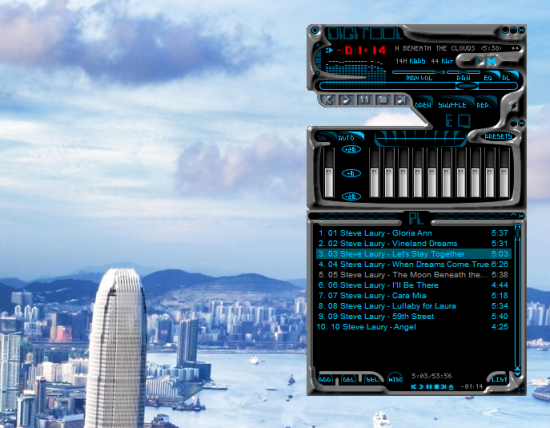
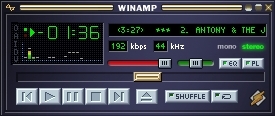
The default Winamp skin is very plain but simple in a nice way. But if you like a special look, there are hundreds of skins available for download, or you could even make your own skin.
Winamp 2 au naturel
USB
HiFace EVO
Coaxial digital
Mark Levinson no.360S DAC
Nice balance between focus, control, tightness, fluidness, dynamics and absence of digititis. Still my reference, even though through the EVO, you might wish for a little more smoothness but is otherwise very detailed and open, still without sounding clinical. Even though it is a really old app by now and even though Winamp 5 (with the correct adjustments made in settings) provides more fluidity and smoothness, I can still recommend good old Winamp 2. It just sounds closest to playback in the wave editor in which the recordings were made.
Winamp 2 au naturel
EMU1212M soundcard
Coaxial digital
Mark Levinson no.360S DAC
Nice balance between focus, control, tightness, fluidness, dynamics and absence of digititis. This combo provids the best balance: the 1212M’s slight thickness and richness/fullness of sound makes Winamp 2.91 sound utterly well balanced. Although my Mark Levinson no 390S cd player still provides more colour and richness, in this system Winamp 2 can almost replace a highend cd player as a music source.
Winamp 2 au naturel
USB
Ayre QB-9
With the Ayre, Winamp 2 sounds even more precise and for me now tends a little too much in the direction of dryness, leanness. In combination with the Ayre, Winamp 2’s usual strength, its liveliness, is not so obvious either and overall, it is less inspiring than Winamp 5. It is still very good and better, in fact, than Foobar. But I prefer Winamp 5 in combination with the Ayre.
Winamp 2 with Virtual Cable
Any interface
VC is absolutely not needed since you are able to directly select your preferred audio playback device and Winamp 2 sounds very good that way but if you use VC anyway, it all gets a little bit too controlled, similar to Foobar.
Tips:
Winamp has many settings. Of much importance is the one where you choose your preferred soundcard but also very important is the waveout setting. You should avoid Windows soundmapper but can choose between Directsound and Wave out. Unlike in iTunes, Directsound sounds much softer and is altogether undynamic and uninspiring. In addition, Winamp 2 sounds liveliest if you avoid upsampling and/or filtering of any kind.
Conclusion:
Even though many people would regard this app as extinct, it still offers a very good sound balance and high neutrality. It is much more musical and fluid than Foobar but without the latter’s intrinsic clinicality and dryness.
Winamp 5:
current version 5.58
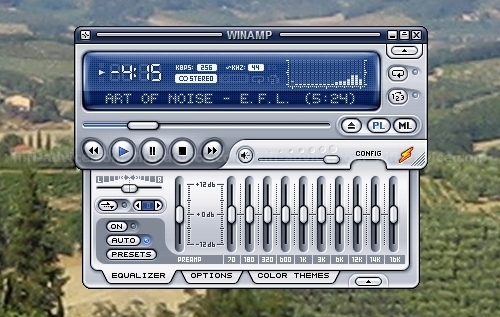
Winamp 5 au naturel
EMU1212M soundcard
Coaxial digital
Mark Levinson no.360S DAC
Sounds rich, fluid and smooth but unless you pay close attention to making the correct settings, sounds restrained and dynamically compressed with loose bass. By making the adjustments in the Tips section below, Winamp 5 will sound more like a fully tweaked iTunes (+Virtual Cable) on Windows. This is a luxurious sound, tending toward the relaxed but is otherwise very pleasant and musical. I do tend to feel that it is slightly too compressed dynamically and a little too rounded at times.
Winamp 5 au naturel
HiFace EVO
Coaxial digital
Mark Levinson no.360S DAC
When using the EVO instead of the EMU, things change considerably. Winamp 5 still sounds slightly rich and smooth but no longer slow or compressed. By making the proper adjustments (as outlined in the Tips section below) and in combination with the Ayre, Winamp 5 is now my favourite player and produces a sound that is at once full ad relaxed as well as dynamically convincing and well-detailed. The EVO manages to squeeze more power, drive, dynamics and details out of the music in such a way that you get a very well-working combination. If it weren’t for the Ayre, this combination would have been my favourite.
Winamp 5 au naturel
USB
Ayre QB-9
With Winamp 5, the Ayre excells and has from now on become my reference for computer audio playback. The use of Virtual Cable does make it even better but is not as stable as I would want it to be. Luckily this combination even sounds good without VC.
Winamp 5 au naturel
USB
Ayre QB-9
In combination with the Ayre, Winamp 5 simply excells. The program still sounds rich, fluid and smooth but no longer slow or compressed. By making the proper adjustments (as outlined in the Tips section below) and in combination with the Ayre, Winamp 5 is now my favourite player and produces a sound that is at once full ad relaxed as well as dynamically convincing and well-detailed. It even amazes me, but even though my Mark Levinson no.390S cd player still provides bigger bass, more colour and more richness, in this system Winamp 5 manages to trump it in a few areas such as articulation, soundstage airyness, focus and freedom of electronic signature. The latter aspect is surprising as I always felt that the Levinson sounded very fluid and analog. But compared to the Ayre (that uses a clever filter that has zero pre-ringing and an output stage without global feedback), the Levinson is still a tiny bit digital. The use of Virtual Cable makes it even better, but is less stable.
Winamp 5 with Virtual Cable
HiFace EVO
Coaxial digital
Mark Levinson no.360S DAC
Unfortunately this didn’t work in combination with the EVO USB interface. No matter what settings I made, I kept having intermittent stuttering and other errors. It seems like the EVO demands more than the VC app can deliver. Even when it played without hickups, it didn’t sound very hot with the EVO. On top of this, I recently discovered that Virtual Cable isn’t stable in the long run anyway (it hickups once or twice a day, if you let it run continuously) so this is not the best solution. Fortunately, Winamp 5 sounds marvellous by itself if you use the HiFace EVO USB interface.
Winamp 5 with Virtual Cable
EMU1212M PCI soundcard
Coaxial digital
Mark Levinson no.360S DAC
Virtual Cable makes the differences between Winamp 5 and iTunes all but disappear. The differences are so slight that I wouldn’t worry about them and choose based upon convenience instead. Configured this way, Winamp 5 may well be the best app for me, and I even prefer it over iTunes+VC.
Winamp 5 with Virtual Cable
USB
Ayre QB-9
When using the EVO instead of the EMU, Winamp 5 simply excells and is my current reference. The program still sounds rich, fluid and smooth but no longer slow or compressed. By making the proper adjustments (as outlined in the Tips section below) and in combination with the Ayre QB-9, Winamp 5 is now my favourite player and produces a sound that is at once full ad relaxed as well as dynamically convincing and well-detailed. It even amazes me, but even though my Mark Levinson no.390S cd player still provides bigger bass, more colour and more richness, in this system Winamp 5 manages to trump it in a few areas such as articulation, soundstage airyness, focus and freedom of electronic signature. The latter aspect is surprising as I always felt that the Levinson sounded very fluid and analog. But compared to the Ayre (that uses a clever filter that has zero pre-ringing and an output stage without global feedback), the Levinson is still a tiny bit digital. The use of Virtual Cable makes it even better: more dynamics, tighter bass, without making the sound dry or sterile. Very, very good, my reference. But VC sadly is not as stable as I would want it to be. Luckily this combination even sounds good without VC. Although I still not regard it equal on all aspects, this combination really can replace a highend cd player as a music source.
Tips:
1.) plugins – output – select your soundcard or device directly, don’t use windows soundmapper, disable volume control.
2.) plugins – input – nullsoft module decoder – enable FIR interpolation (HQ) instead of Interpolation
3.) General prefs – Playback – disable 24bit playback
4.) General prefs – Playback – disable dither
5.) General prefs – Playback – eq tab – disable limiter
Conclusion:
Winamp 5 is a very accomplished player, for its interface in almost all aspects the equal of iTunes but offers many more options and if you tweak it properly and match it to the appropriate hardware, this player is almost unbeatable. Using Virtual Cable, it sounds very close to iTunes (as long as the correct settings have been used) but without VC, Winamp 5 clearly beats iTunes for windows.
The remaining programs I tested performed less well overall, therefore I will not go into detail as much as for the programs above.
Foobar 2000
version 0.9.5.3
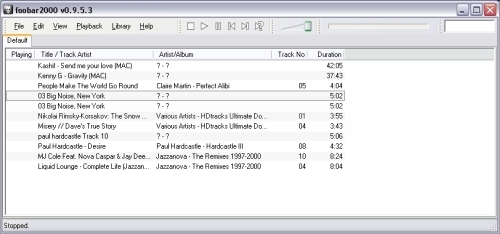
au naturel (Virtual Cable not needed)
Any interface
No matter what configuration Foobar was used with, and even when enabling upsampling, I always find it sounding thin, flat and lacking colour. It is a very accurate sound and while I can understand why people would favour accuracy over musicality, they’d better use another application such as Winamp 2, which manages to sound both accurate and musical. But there are more programs that have a similar siganture such as Media Monkey. It doesn’t sound exactly alike but is still plenty detailed and fast.
Update jan 2012:
ASIO4ALL makes all the difference in the world. Just like in Winamp, in Foobar you can select various output settings and until now, I used Waveout because this sounds best with Winamp and in fact, with Foobar it also sounds better than DirectSound. Switching from DS kernel streaming to ASIO however, it was revealed that Foobar’s inherent thinness and lack of colour is only present when used like that and this disappears once you use ASIO4ALL. Used that way, Foobar 2000 sounds a lot like Winamp 5, but a little livelier, Winamp 5 being a little smoother, but not superior anymore. This was nicely demonstrated while testing the Kingrex UC192 usb interface when it wouldn’t work with Winamp (a driver issue) but sounding absolutely fantastic using ASIO and Foobar. The later Kingrex UD384 usb interface also works with, and sounds fine with, Winamp but also sounds marvellous via Foobar and ASIO. This may mean that Foobar sounds better when using ASIO, but I have not investigated this any further.
Media Jukebox
version 12.0.39.0
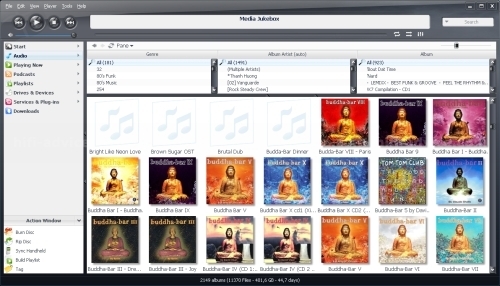
au naturel (Virtual Cable helps but not enough)
Any interface
I know that I pronounced Media Jukebox as an excellent application in the previous test. When listened to more closely, and, admittedly when it is in stronger competition, it turns out that Media Jukebox always sounds a bit restrained temporally. I don’t know what it is and no matter what I choose in the settings, there is something wrong with the PRAT. This is a shame because otherwise this is a fine player. Please note: the version I used is the free version. J.River also have Media Center, which supposedly sounds a lot better. I have still to compare it but native kernel streaming promises much.
Media Monkey
version 3.0.5.1187
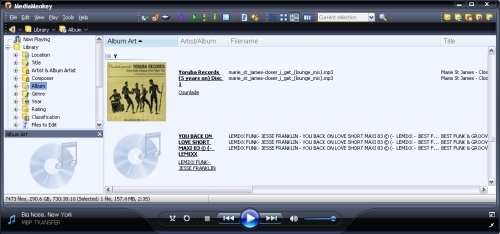
au naturel (Virtual Cable not needed)
Any interface
Media Monkey sounds fast, fluid, airy and open. But it manages to avoid the dryness and feeling of sterility that Foobar portrays. It does sound less colourful than Winamp 2 though. The latter program is just as fast and dynamic but sounds fuller and slightly richer. Still, Media Monkey is well liked. (Be prepared to dig a little in the settings as a lot can be done there)
Mac Playback Applications tested
iTunes
current version 10

iTunes au naturel
Optical digital
Mark Levinson no.360S DAC
Without comparing to the full size PC, this combination doesn’t sound bad: full, smooth, fluid and a slightly inaccurate bass. But the whole is emotionally a bit uninvolving as well as ryhmically restrained.
iTunes au naturel
USB
HiFace EVO
Coaxial digital
Mark Levinson no.360S DAC
Compared to the optical connection, this method provides much more dynamics and speed, as well as more detail, better focus, more air and and a good sense of PRAT. The bass becomes much more numble and articulte. Al the while it keeps most of the fluidity and smoothness of the optical connection. Sound tends to sound boxed in though, the soundstage is not very big. But compared to the optical connection, it now does sound a little technical, matter-of-fact and it is very obvious that we’re listening to a computer, not a real CD player.
iTunes au naturel
USB
Ayre QB-9
The Ayre changes the situation completely for the Macbook. Now there’s freedom in the soundstage, where it was constrained and boxed-in before. There’s much more fluidity, glow and smoothness as well as excellent speed and rhythm. All of a sudden the Macbook starts to sound like a serious music source. The USB cable that’s used turned out to be af a major influence here. The Transparent Performance USB cable was best for its fullness of bass, warm midrange and silky treble. The stock USB cable I tried sounded plenty detailed but emptier and thinner. All in all, the Ayre was chosen as best interface for the Macbook, even though its bass was somewhat soft and rounded. This was actually beneficial in losing some of the Macbook’s inherent clinical and thin sound.
iTunes with Amarra Mini
Using any connection method
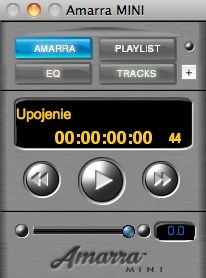
Amarra is a program that functions next to iTunes. It is capable of taking its tracks from iTunes’ playlist but can also be controlled on its own and can make use of its own playlist. The exact mechanism behind it is a little secretive but I think that it is close to the kernel streaming issue on Windows PC’s. By using Amarra you make a more direct line from audio playback to the output on the computer, avoiding detours via mixers and resamplers. The result is pretty obvious and immediately clear: speed increases, detail is enhanced and focus is improved. At the same time though, the sound becomes more dry and clinical and on the Macbook this is simply too much. On a full size Mac Pro the result may be very different but even then I think that I would prefer Pure Music. That program is also a lot cheaper!
iTunes with Pure Music
Using any connection method
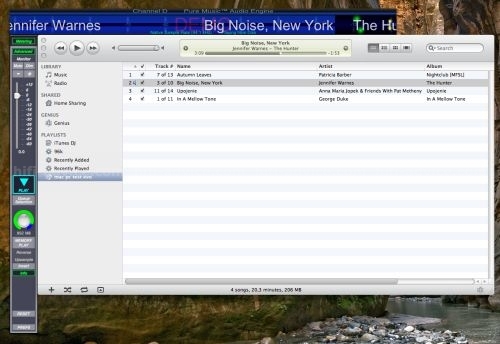
Pure Music is a program that functions next to iTunes. It docks to its window and provides much the same functions as Amarra does. Here too the mechanism is kept secret but again I think that it is much to do with taking the direct route from playback app straight to the outputs, thereby avoiding mixers and resamplers. Its function may be the same as that of Amarra but the sound is different. Where Amarra brought many improvements but tended to the overanalytical, Pure Music is beneficial in much the same way while avoiding most of the disadvantages of Amarra. Pure Music makes for more tightness, detail and resolution, as well as better articulation in the bass but keeps most of iTunes’ inherent fullness of sound. Pure Music may be a little too much on the Macbook still but it is very listenable and musical. There’s still fluidity and smoothness. Enabling the memory player function made Pure Music sound more like Amarra and was therefore less liked. As a bonus, Pure Music is relatively affordable, compared to Amarra.
Tips:
iTunes sounds just fine on the Mac. (not on Windows!) Just make sure that you go to the Audio Midi Setup and choose your preferred samplerate manually. Every time you play a song in a different samplerate, but also every time you switched off the Mac because it reverts to 44k. Keep this in mind because iTunes in native form will gladly play a 96k file in 44k. It will just not sound as good as it should. Try Amarra or Pure Music and see for yourself if you need the added focus and tightness. Make sure to think about playing music from a Macbook though, as my tests have shown that a full grown tower PC sounds a lot better than a Macbook. But there’s an additional bonus to add ons such as Amarra and Pure Music: they allow auto samplerate changes. Whichever samplerate you play, the USB-connected dac will just follow.
Conclusion:
iTunes for Mac is a solid program. It provides good sound quality, provided you use a good interface to get the audio out of the computer. Toslink is below par and should be avoided. Other programs can sound punchier, tighter and more focused while add-ons such as Amarra and Pure Music do much the same. But I feel that, at least in combination with a Macbook, and in my setup, the sound is already so much thinner and flatter than with a full size PC or a reference quality CD player that I feel that I really need iTunes’ fullness of colour and gentle smoothness to make up for this to some extent. As such I feel that iTunes by itself (au naturel) provides the best sound balance in my situation (Macbook-HiFace EVO-spdif-Levinson 360S DAC). However, I also clearly hear that without Pure Music, iTunes sounds a bit empty, it just doesn’t sound as lively and enthusiastic, and timing is just a little off. Depending on your music taste and setup, iTunes with enhancements may well be the preferred solution. Please do note that this may be different on a full size Mac Pro in which case I think that I would favour iTunes with the Pure Music add-on. This I will hopefully test as well some time. In the meantime I have reached the conclusion that in case of a direct USB connection to a low-jitter DAC (in this case Macbook-USB-PS Audio PWDMKII) PureMusic makes iTunes sound much better.
After the disappointing first listening results using Tosink optical cable, it was decided to throw this method out of the equasion. At the same time, a strong preference was made for using the Ayre QB-9 and in subsequent listening, this preference remained, no matter what application was used for playback. Results were consistent with the EVO but generally more technical, drier and less colourful.
Audirvana
version 0.2.1
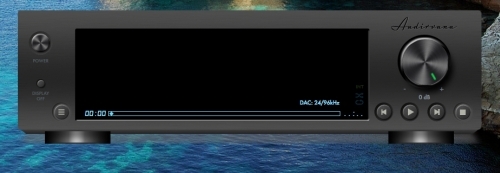
Any interface
This program is positioned as an audiophile player but didn’t work very well during the tests. It kept crashing but when it works, it sounds very good, much like iTunes in combination with Pure Music.
Update 25 march 2012:
I now have Audirvana Plus version 1.1.2 and this one is stable. Also it sounds very nice: a little lighter/airier than iTunes+PureMusic, but highly engaging, fluid and non-digital. I haven’t done very extensive comparisons though, because my current favorite iTunes with PureMusic gives me no reason to look elsewhere, but Audirvana might well position itself inbetween Amarra and PureMusic, having PureMusic’s more relaxed fluidity and Amarra’s higher precision. As I haven’t used Amarra in a long time though, these statements are a bit of a guesstimation though, so better not draw hard conclusions from them.
Play
version 0.3 (1071)
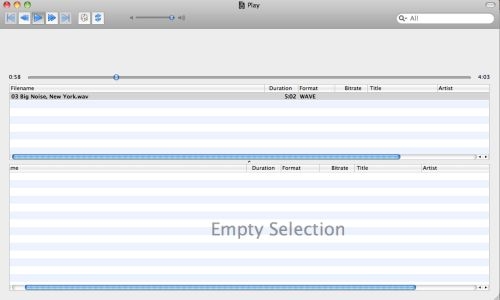
Any interface
Play sounds very good and comes in second after iTunes. You may even call it better because the program sounds tighter and more focused than iTunes in native form while avoiding sounding clinical. On the Macbook though, I feel you need all the fullness and warmth you can get and as such, iTunes is the better match. On a full size Mac Pro, Play may be the better choice. Sonically probably very close to to Winamp 2 on the PC, if the Macbook itself wasn’t reducing the score.
Vox
version 0.2.7 RC1
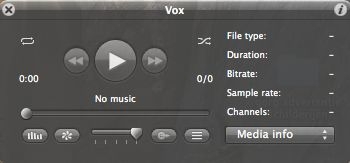
Vox plays almost any format and sounds quite good but comes in after Play mostly because it sounds even tighter, less full and more technical and as a result, less involving. I feel that Vox sounds a lot like Winamp 2 op the PC but the Macbook itself prevents it from performing better.
AyreWave
version 1.0B (4)
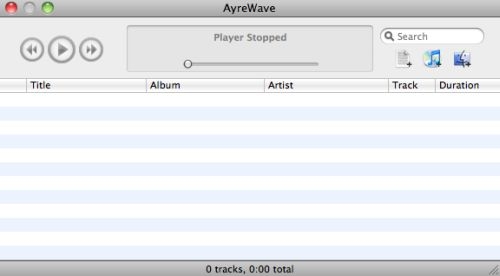
Any interface
AyreWave is not a program that I would recommend as it is extremely clean and tight sounding, making it an uninvolving listen in my system. Its airy highs cannot change this. Stepping outside of the Mac programs and comparing to the PC programs, I think even Foobar still sounds more fluid.
Always check samplerate in Audio Midi Setup on a Mac
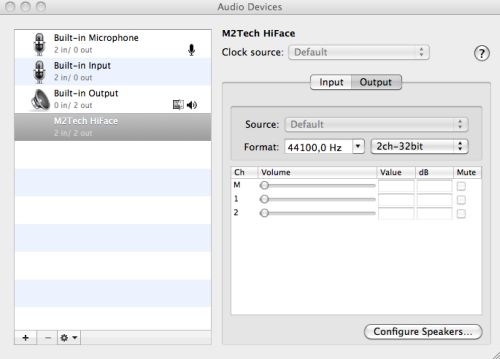
Mac or PC, or should I say Laptop versus full size computer?
You’ve probably read before in other articles that I’ve written that the Macbook sounds very different from the full size PC. Worse, in fact. But until now, this was always based on the PC being 20 meters of coaxial digital cable away from the DAC while the Mac had the “advantage” of being right next to the audio system. I’ve put that word into brackets because in audio, sometimes better is not the same as more musical. So, in order to fully test this once again, I decided to place my main PC next to the audiosetup and thus create completely equal circumstances for both Mac and PC. I deliberately connected up the PC with a crappy powercord, to get it closer to the tiny powersupply that the Macbook uses. A fat sounding powercord will also make a PC sound fatter, even if you only use digital out or, as turned out in this test, also with USB. I cannot emphasize this often enough: cables do matter! Also where it concerns digital equipment such as computers. As it turns out, the Macbook still sounds markedly different from the full size PC, no matter what playback app is being used or what (external) device is used to convert the audio.
I have no prejudice for either Mac or PC. In fact, I feel that both systems have their advantages and disadvantages. I also do not think that the difference in sound that I heard was completely attributable to the Mac system per se, but more to the fact that it is a notebook. The funny thing is that some friends that I’ve spoken to about this matter, feel that the laptop sounds better, not worse than a full size PC. I think, and this really is just me trying to find a rationale behind this, that many people prefer a forward and slightly aggressive sound over a more gentle, more natural sound. I’ve noticed this many times here at home when I have guests over or at audio shows, the tendency for people to favour the louder, more forward and more impressive component. Even though it is much less refined and natural. Taste comes into play here too, for sure. But I can’t help feeling that many people listen to superficially. By that I mean that initially they may have favoured the louder, more aggressive sounding component but that they may grow tired with it over time. They just don’t realise this themselves yet. Again, this was just me brainstorming and I have absolutely no proof for it. It is just a feeling I have. Anyway, at least we can agree that differences do exist. The large powersupply may be responsible for the most part and the bigger components inside and the more spacious layout internally but I cannot be sure until I compare the full size PC to a full size Mac as well as a PC laptop versus my Macbook. Maybe I’ll get to that in another test. For I’m sure that I will again find differences in sound, but which will be better? I don’t dare say. All I do know is that thus far, the three PC systems I have had over the years sounded much the same. The Macbook really deviates from this norm.
When using a USB DAC, one advantage Windows has over Mac OSX is that the samplerate is automatically chosen according to the music played. It changes real time and you can mix all resolutions and samplerates in a playlist. On the Mac, you have to go to Audio Midi Setup and choose your preferred samplerate manually. Every time you play a song in a different samplerate, but also every time you switched off the Mac because it reverts to 44k.
Read the extensive review of the Ayre QB-9 DAC elsewhere on this site.
Final Conclusion
The best app for PC right now for me are Winamp (actually it is currently jRiver Media Center, edit 2016). Whether you prefer Winamp 5 or 2.91 is very much a matter of taste. Winamp 2.91 is still my reference for neutrality while Winamp 5 is best for refinement and smoothness. Winamp 5 works well if you want to ameliorate digital nasties. The best app for Mac would have to be iTunes in native form. But do note that this is when the Mac in question is a Macbook. For whatever reason, Macbooks (and notebooks alike) sound thinner, flatter, less colourful and even though my Macbook sounded plenty open and detailed, altogether I find it simply less musical than full size PC’s. For the Macbook, I felt that the extra transparency, resolution and tightness brought by Amarra and Pure Music was just too much. I’m not saying that I prefer inaccuracy, blur and jutter over an accurate reproduction – far from it. In fact, the best dacs are those that reproduce timing best. But computers are inherently somewhat unfit for music reproduction. When you tweak everything just so that replay becomes most accurate, you also unveil the synthetic, digital signature and you start to hear what the computer does wrong. Seen in this light, and if pressed to use a a computer, I prefer a solution that doesn’t highlight sharpness, agression and sterility but one that ameliorates these artefacts and thereby allows me to enjoy my music more. I have yet to compare a full size Mac Pro to my big PC. The cards may lie different then and perhaps iTunes could then use some firming up using Pure Music as, compared to all other applications I tested, iTunes is quite full, round and warm sounding by nature. However, it is easy to hear that timing is better with Amarra and Pure Music. If the situation allows it, for example in a more forgiving setup or, as I tried recently, with a USB/spdif interface with battery power supply, such as KingRex’ UD384, I actually preferred iTunes with PureMusic most of the time. So, this is all relative and in the end it is about carefully balancing all components in the system. Moreover, now that I have the MKII update in the PS Audio PWD, it has improved so much in terms of musicality, that I now prefer the Macbook with PureMusic through it using a direct USB connection, instead of without PureMusic into the Levinson 360S DAC using the HiFace EVO interface and an spdif connection. The Levinson is still smoother, but the PWD is much more real and acoustically right, and PureMusic only enhances those qualities, instead making naked iTunes sound decidedly blurry.
For both PC and Mac, the Ayre QB-9 was found to be the best interface/DAC. So, if we put iTunes in native form on the Mac up to Winamp 5 on the PC, both using the Ayre QB-9, the differences lie as follows: The Mac will sound more transparent and lighter and, perhaps, even more subtly detailed. The PC however, will portray a much larger and more intimate soundstage in which the instruments have more space and are more widely laid out. Also, the PC will have bigger bass and more colour as well as sounding much more like a highend cd player than the Macbook would.
In fact, and this is the first time that I have encountered this, the PC using Winamp 5 and the Ayre QB-9 USB DAC combination rivalled my Levinson no.390S cd player in the areas of transparency, focus, articulation, soundstaging and, surprisingly, lack of electronic signature. It manages this without sounding dry or sterile. There are still facets of the Levinson’s performance that the PC combo could not match such as bass fullness, drive and colour. Nevertheless, for the first time I can say with conviction that computeraudio, done right, can really replace a highend cd player.
Update december 2011 – Steinberg Wavelab
A reader asked me whether I had tried Steinberg Wavelab wave editor for playing WAV files. Indeed I had, extensively even, but so long ago that I had forgotten all about it. Nevertheless, I remember how good it sounded. Its superiority over any other app I had, Winamp 2 included. was always clear when playing back files I had just recorded. I used Wavelab when I made LP recordings on a Windows computer years ago. Wavelab came free with the EMU1212M audiocard that I used. Wavelab sounds solid, full in the bass, but also nimble and dynamic, definitely not blurred or soft, but neither agressive or forward. Too bad it is such a hassle to play audiofiles in it, compared to all the other play-only applications.
Update january 2012 – Foobar is excellent when used with ASIO4ALL
ASIO4ALL makes all the difference in the world. Just like in Winamp, in Foobar you can select various output settings and until now, I used Waveout because this sounds best with Winamp and in fact, with Foobar it also sounds better than DirectSound. Switching from DS kernel streaming to ASIO however, it was revealed that Foobar’s inherent thinness and lack of colour is only present when used like that and this disappears once you use ASIO4ALL. Used that way, Foobar 2000 sounds a lot like Winamp 5, but a little livelier, Winamp 5 being a little smoother, but not superior anymore.
PC Specs:
ASUS P5W DH Deluxe motherboard
Intel Pentium dual core 6600 2,4 ghz
2GB Ram
Samsung serial-ATA interne hard drives
EMU 1212M interne PCI soundcard
Windows XP SP3
Macbook Specs:
Macbook Pro 17 inch
4GB Ram
2.8 GHz Intel Core 2 Duo
Mac OS X 10.6.4
Interesting sidenote – Windows Vista versus Windows 7
An aquaintaince told me that he upgraded his Windows machine from Vista to Windows 7 and was disappointed with the resulting sound. Just to be certain, he downgraded back to Vista and sure enough, sound quality was restored. I haven’t tested this myself but it wouldn’t surprise me if this turned out to be true. Just so you know: Vista is comparable to XP soundwise but Windows 7 has a changed audio architecture.
A response from J Gordon Rankin
Both Winamp and Media Monkey are not bit true, yet you give them the best marks??????
A laptop will kick the crap out of a desktop any day. I know I have 5.4M desktops in the field that I designed (motherboards, power, BIOS etc). EMI/RFI regulations for Laptops are 40% higher than desktops. Desktops will always make the music more blurred.
Apple sounds 20% better than Windows. Heck I have source code for Windows and I cannot make it sound as good.
On the PC J River sounds the best. On the MAC Pure Music or Decibel sounds the best. Both use Memory Mode, PC WASAPI, MacOSX Integer HOG (exclusive) mode.
To bad you only got to listen to the 24/96 versions, the 192 is much better. Also you need to download so quality master files.
Thanks
Gordon
Response from the author @ 25 march 2012:
Indeed, now that circumstances are different (PS Audio PWD MKII upgrade installed and used with USB instead of Levinson 360S with EVO interface and spdif) I prefer iTunes WITH PureMusic and find the naked iTunes to sound decidedly blurry indeed. This proves once again that it is all very much situation-dependent. When you are in the situation that the sound of your setup is on the clinical side, then a less accurate source may sound better on balance.
Update June 2016:
When using Windows 7, my current favorite is jRiver Media Center 18 using Wasapi output method. The PC is not the main source though, as I find the AudioAanZee Reference Flow and Aurender N10 to sound quite a bit better still.
Next
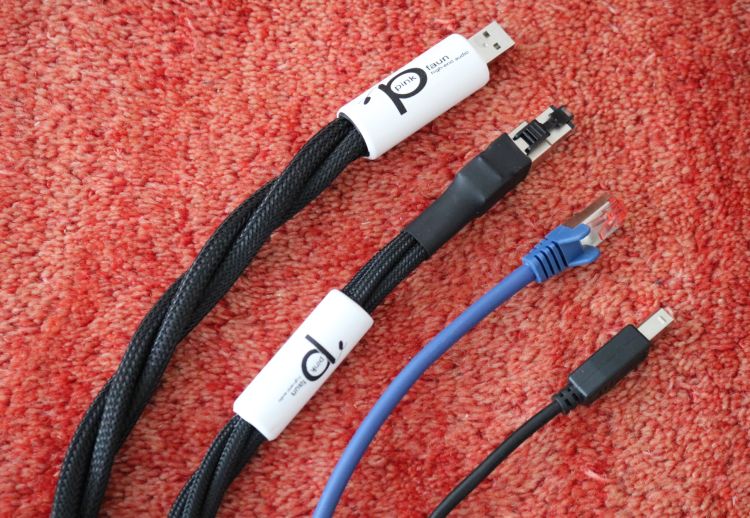
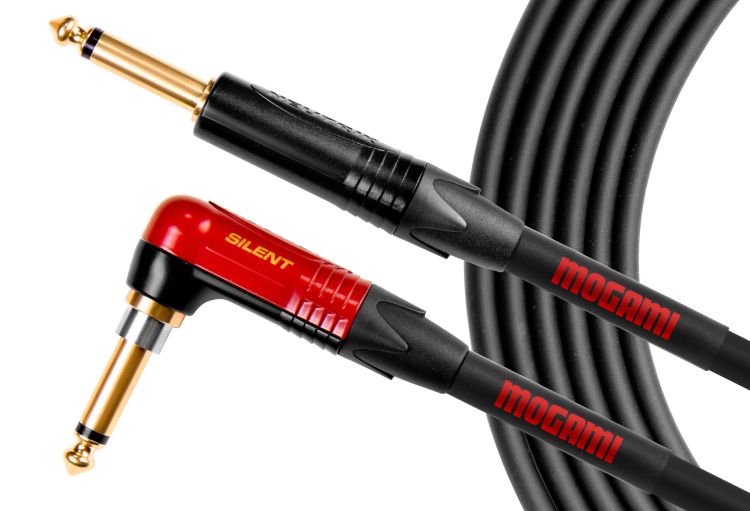
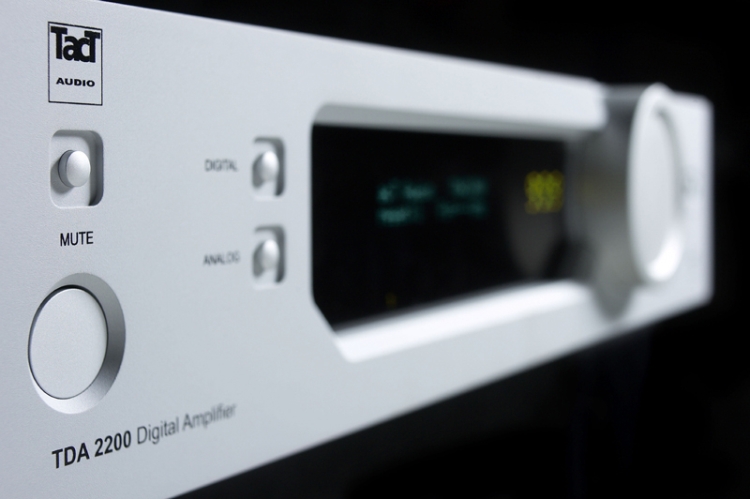
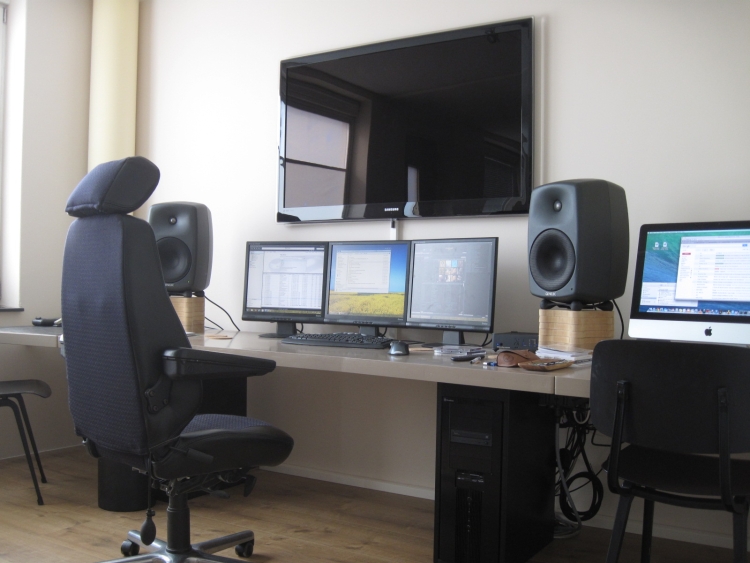
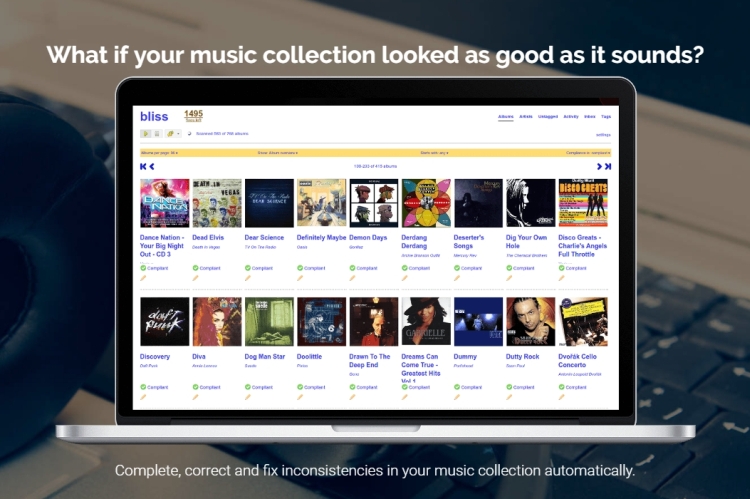
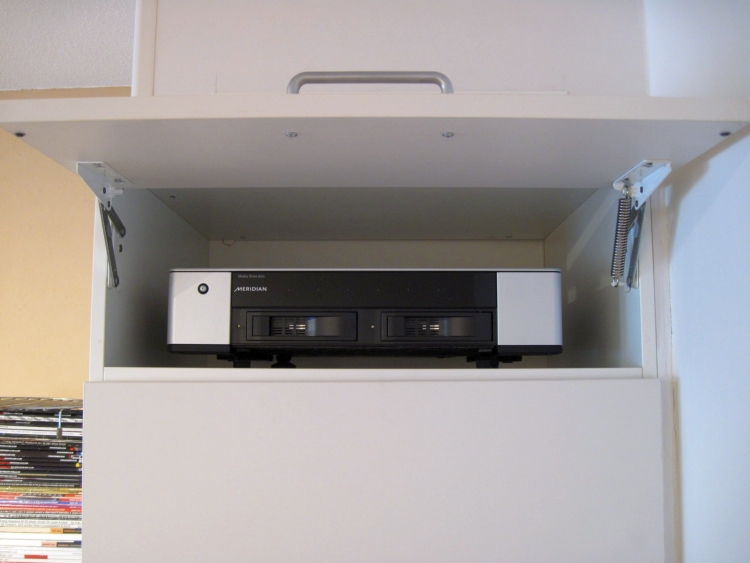
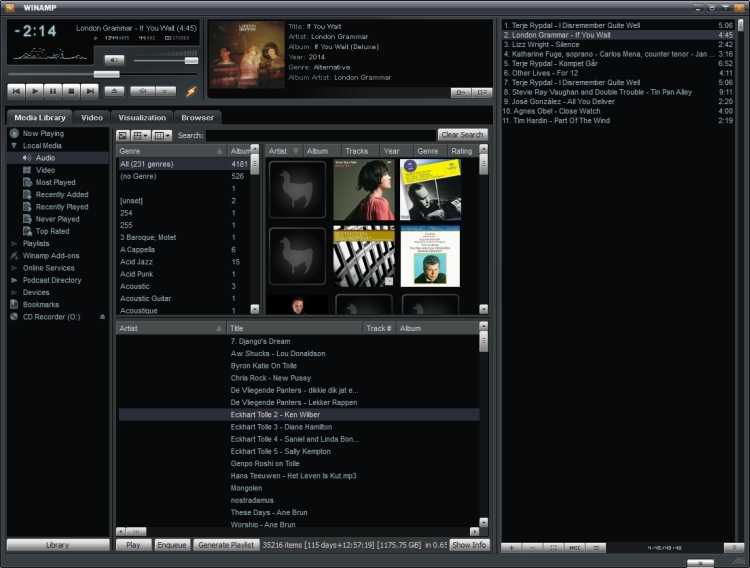
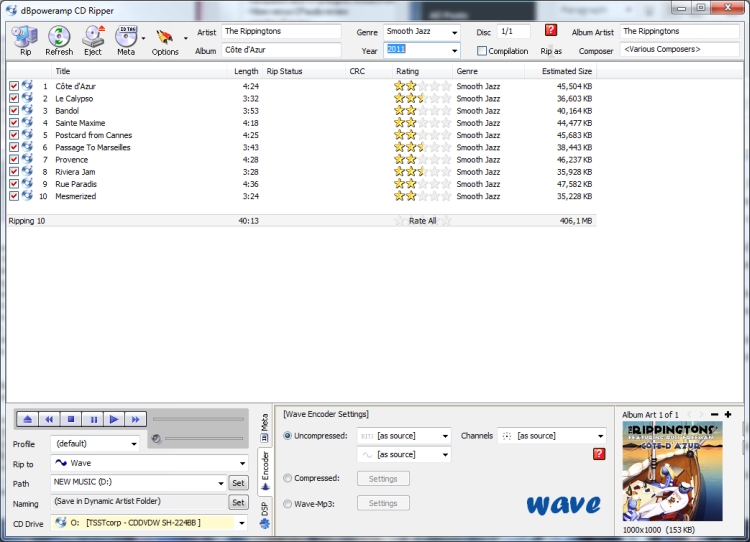
Hi Christian: A fantastic, detailed and insightful analysis / comparison.
Although this was authored 6-7 years back (today, June 3, 2017, and your article 2010-2011) I believe the “same” can be extrapolated today; namely all of the variables you noted in your comparisons.
The difference being far greater circuit speed, industry knowledge –improved algorithms and corresponding listener impressions.
Yet, no doubt, the “same” applies today. I have great doubt Computer Audio (including Streaming) will take the near 20-years (as CD did to mature), but it remains in its infancy. Late 2017, early 2018, make that the next 12-months I believe will reveal many a “new” discoveries concerning superior computer audio SQ.
I believe your SQ impressions may have been completely reverse if you had a dynamic/moving-coil, conventional loudspeakers as opposed to your panels. These/your (listener preferences) you did commendably suggest plays a role –along with high-resolution experience among other factors that must all be considered impacting SQ.
I both smile (approvingly and knowingly) your comments regarding “fat” (AC power) cables sounding, well ‘fatter’ ! So true. I may also add that extra “poundage” can also be detected (easily) when the cable insulation/sheathing is a softer compound.
all in all, your thorough exploration should be considered a major benefit to all who were/are contemplating computer audio.
Well done.
peter jasz
Hello Christian,
Thanks for your nice review.
I am interested in two topics:
1. is your favorite computer sound card still EMU1212M PCI?
2. can you use the hiface evo ddc with MacBook? On which macOS?
Thanks!
Hi Karl,
It’s been over 10 years since I last used a computer card’s direct outputs for audio purposes and in the meantime, a plethora of audio interface cards have been issued. I’m sure that there are better options. Also, I feel that the better solution is to use an external interface like the HiFace EVO that you mention. The last time I checked, also years ago, the EVO worked with MacOS as well as Windows. There has been a driver issue but that was solved. It’s possible that new issues or incompatibilities have arisen but I would wager that it still works with both systems and in current Operating Systems. Looking at the M2Tech website right now, I found the following info: “Presently, Windows XP, Vista, Windows 7 drivers are available, as well as Mac drivers for 10.4, 10.5 and 10.6”. Going from my own experience, windows 7 drivers also work in windows 10.